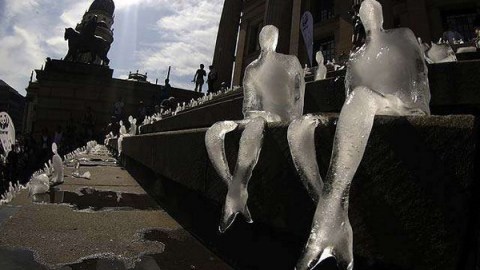As Chicago Adapts to Climate Change, the Need to Focus on Communication as a Structural Problem

Yesterday, the New York Timeslaunched the first in a series of stories focusing on the challenges of adapting to climate change. The feature profiled the city of Chicago which joined by New York has taken the lead among major municipalities already engaged in adaptation planning and initiatives.
As political leaders and journalists pay increasing attention to climate change adaptation initiatives, still overlooked is the role of the media and communication in this process. To date, we have tended to think about climate change communication mostly as a message problem — either focusing tactically on how to explain components of the science, training scientists to be effective bloggers etc.
But beyond these tactical approaches, climate change communication is fundamentally a structural and institutional challenge that requires broader strategy and focused investment to manage. In a city like Chicago, the media ecosystem in that city is in serious distress, weakened appreciably by the precipitous decline of theChicago Tribune.
It is unlikely that citizens and stakeholders in Chicago have the regionally-focused media and communication resources they need to effectively participate, plan, connect, and manage the threats posed by climate change. In a commissioned white paper last year to the National Academies Roundtable on Climate Change Education, I outlined “three communication pillars,” initiatives that government agencies and foundations should invest in that would significantly bolster the communication infrastructure within a state, region, or city. In a paper led by my colleague Ed Maibach, he outlines a similar view of climate change communication as both an individual and structural challenge.
As I reviewed in the white paper, three structural pillars to focus on include:
a) Carefully designed public meetings that provide social spaces and incentives for a wider net of citizens to come together to learn, discuss, plan and provide meaningful input on policy measures, government initiatives, and private and non-profit sector planning.
b) Digital news communities that provide independently produced news and information about climate change and energy tailored to the local and regional needs of an area such as Chicago and that provide a social media platform for aggregating local bloggers, news from other outlets, information from agencies and universities, and for discussion by citizens and opinion leaders.
c) The training and recruitment of everyday opinion leaders who can pass on information and resources to others and who can recruit their neighbors, friends and co-workers to turn out to public meetings, volunteer for initiatives, and take advantage of the resources available at the regional digital news community.
With each of these initiatives, past research provides a scientific grounding and understanding for their careful design and implementation. Formative and ongoing evaluation will also lead to new knowledge and the increased effectiveness of these initiatives that can eventually be modeled and replicated across regions or municipalities.
In the National Academies white paper, after drawing on existing resources in a region such as universities, public media, and science museums and centers, I estimate the high end cost for funding these three types of initiatives at an intensive level at $1 million annually.
The money is readily available to launch such an initiative in an area such as Chicago, both from government agencies which in recent years are investing more than $20 million annually in climate change education initiatives and from private foundations which as I detail in the Climate Shift report invested more than $360 million in climate change and energy initiatives, but only a little more than a $1 million of this funding went to direct support for media organizations or projects.




